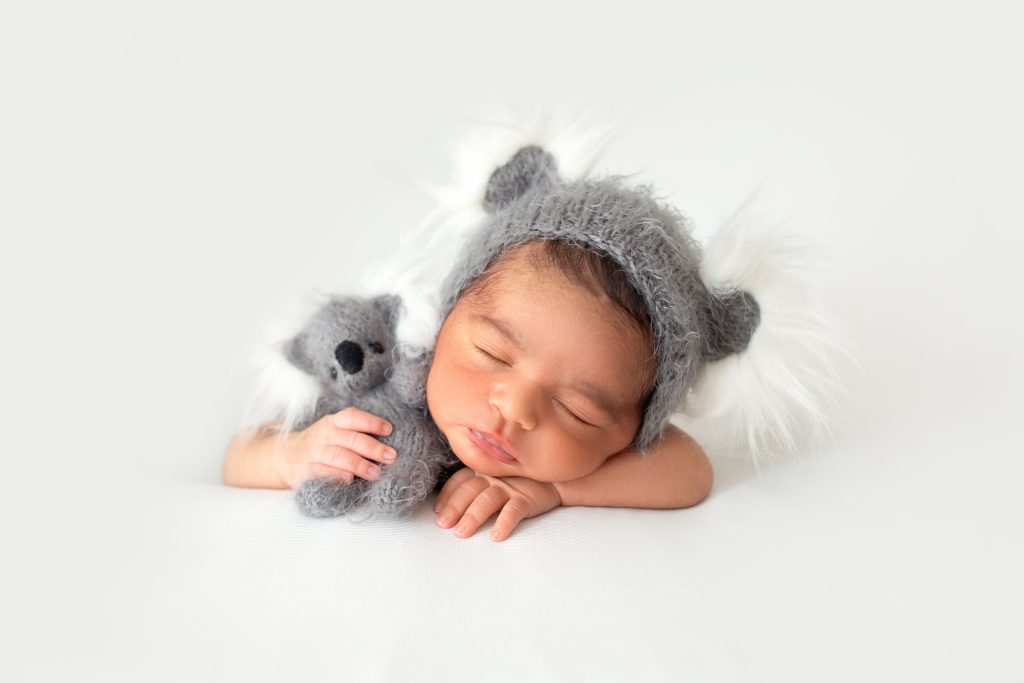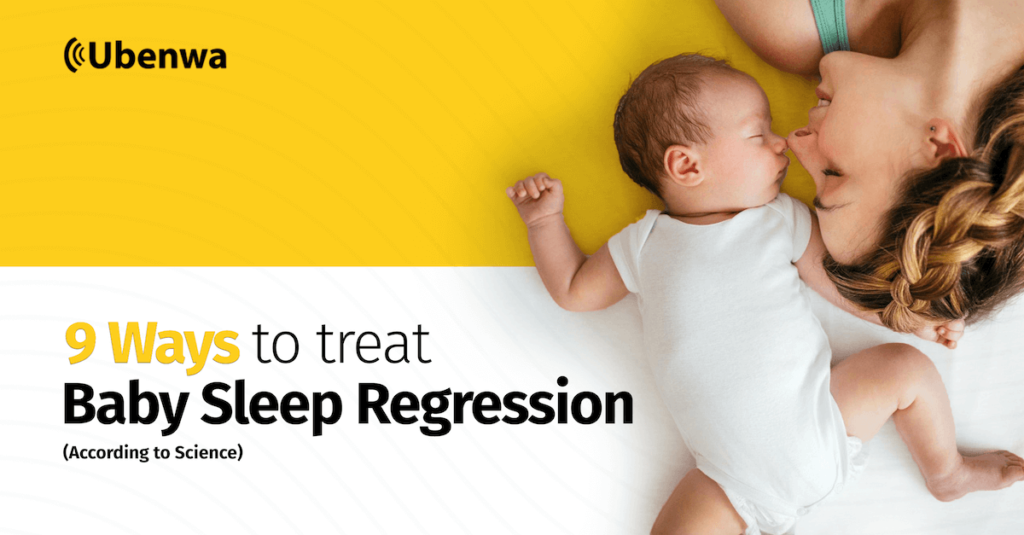Article Content
Welcome to the world of sleep
As new parents, it can feel like you're navigating a whole new universe filled with mysterious sleep patterns, crying, sleep regression and a whole lot of questions.
Enter sleep training - it's like a magic wand for helping babies drift off into dreamland. Sleep training is a great way to teach your baby to fall asleep on their own, which is key for healthy sleep patterns and overall well-being.
It can be tough to figure out how to help your little one snooze through the night -- but don't worry, we've got your back.
In this series of articles we will:
- Dive into the science of baby sleep
- Explore different sleep training methods
- Give you all the tools you need to create a sleep training plan that works for you
We’ll also share tips and tricks on how to make the process as smooth as possible, and how Ubenwa Nanni AI can help you on your journey. So grab a cozy blanket and get ready to say "nighty night" to sleepless nights!
Sleep patterns are crucial to know when it comes to training your baby to snooze like a champ. Babies have different stages of slumber as they grow, and knowing about these stages can help parents create a dreamy sleep environment.
There are 2 main sleep states for babies: quiet sleep (non- REM) and active sleep (REM).
Quiet sleep has 4 stages:
- Stage 1 : Drowsiness—eyes droop, may open and close, dozing.
- Stage 2 : Light Sleep—your baby will move and may startle or jump with sounds
- Stage 3 : Deep sleep—your baby will be quiet and does not move
- Stage 4 : Very deep sleep your baby will be quiet and does not move.
Active sleep has only one stages:
- Rem Stage: Your baby’s eyes may move around while closed, their limbs and fingers might twitch or jerk, their breathing might speed up, and they might move their mouths. This is also when they're more likely to wake up or have nightmares, and is very different from adult REM sleep where the body becomes fully paralyzed.

Unlike adults who can get away with only 7-9 hours, newborns snooze for short periods across a total of 16-17 hours a day, with 8-9 hours in deep sleep. As they grow, their sleep schedule shifts. By 6 months, they usually sleep 14 hours a day, and by age 1, they sleep for about 12-13 hours daily. With time, they also develop a more consistent sleep schedule, with longer night sleep and shorter day naps.
But for parents of newborns, getting their little one to catch those precious Z's can be a real nightmare. From feeding schedules to developmental milestones and everything in between, there are a bunch of reasons why baby sleep can be a challenge.
Every baby is unique and has their own sleep patterns and needs. So if you want to be the dream team when it comes to sleep training, it's all about getting to know your little one's sleep personality. By understanding your baby's individual sleep patterns and what might be causing any snooze challenges, you can tailor your sleep training plan to their specific needs.
And of course, sleep training is not a one-size-fits-all kind of thing. It may take some time and patience to find the right approach, but with the right info, you can create a sleep environment that is just right for your little one.
Parent-Led Sleep Training Method:
- Cry It Out Method: First up we have the "Cry it Out" method, also known as "extinction." This method involves putting your baby to bed and letting them cry it out until they drift off to sleep.

This method is controversial as it can be stressful for both the baby and the parents, and some experts warn that it can lead to an increased risk of emotional and behavioral issues in the baby.
Studies have also shown that prolonged crying can lead to increased cortisol levels in babies (a stress hormone). If you choose this method, consult a pediatrician first and make sure your little one doesn’t have any underlying medical conditions that could put them at risk.
- Ferber Method: Then there's the "Ferber Method", which is often mistaken for Cry it Out. With this method, you'll put your baby to bed and still let them cry it out, but you'll return to check on them at regular intervals
Start by reducing the amount of time you spend with your baby before bed, then gradually increase until they're sleeping on their own.
For example, on the first night you could visit after 3 minutes, then 5 minutes, then every 10 minutes until the child is asleep. Then, each night the intervals between visits should get longer. This helps your baby feel secure that you are nearby while still learning to sleep on their own.
Baby-Led Sleep Training Method:
Now let’s talk about the other side of sleep training: "Baby-led."
With this method, you get to play the role of sleep coach and actively soothe your little one until they doze off. It's a perfect fit for new parents or very young infants who aren't quite ready to say goodbye to Mom and Dad just yet.
Think of it as the "No Tears" approach. It's all about making small changes to your baby's sleep environment to make it just right for sleep.
Before bedtime, decrease the stimulation to help your baby learn to fall asleep on their own. Having a consistent bedtime routine, like a bath, story or song can signal to your baby that it's time to rest.
It's also important to make sure your baby's sleep environment is safe and comfortable. Be sure to use a firm, flat sleep surface and keep the room at an appropriate temperature (on the cooler side is usually more comfortable for your little one).
Then, just observe your baby's natural sleep patterns and let them sleep when they're tired. If your baby cries, try to soothe them with a gentle touch or soft voice instead of picking them up.
If you're hesitant about the "Cry It Out" or "Ferber" methods, this might be the way to go.
Choosing the right sleep training method can be a tricky task, but whatever method you choose, Ubenwa can help.
And don't forget the most important ingredient for success - consistency! Once you find a method that works well for you and your baby, being consistent will help them get into a comfortable routine that will make the changes stick.
Sleep training takes time and patience, but if you approach it with the right attitude, it can lead to a healthier sleep pattern for your little one. While you shouldn’t expect immediate results, no single method works for every baby so don't be afraid to try different approaches until you find what works best.
With an open mind and a little flexibility, you'll be snoozin' and snugglin' with your baby in no time!
Last Words from Ubenwa
Remember, sleep training is a personal decision and it's important to choose a method that aligns with your parenting style and your baby's needs.
Next time, we’ll dive into the exciting world of sleep training again to show you exactly how to implement your preferred method. So, weigh the pros and cons of each, pick the one that works best for you and your baby, then grab your favorite sleep mask because it’s time for some well-deserved shut-eye!
Want to learn more about your baby’s cries and get access to AI-powered cry insights not available anywhere else?
Click here to analyze your baby’s cry today with Ubenwa’s Nanni AI (now accepting our first testers).
References & Further Reading
Scientific Articles
- Sleep and Brain Development: The Critical Role of Sleep in Fetal and Early Neonatal Brain Development by Stanley N. Graven, MD and Joy V. Browne, PhD. https://www.sciencedirect.com/science/article/abs/pii/S1527336908001323
Books:
- The No-Cry Sleep Solution by Elizabeth Pantley
- Solve Your Child's Sleep Problem by Richard Ferber
- The Baby Sleep Book by William Sears and Martha Sears
- The Happiest Baby on the Block by Harvey Karp
- The Sleep Lady's Good Night, Sleep Tight by Kim West



